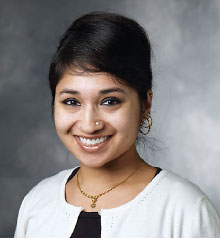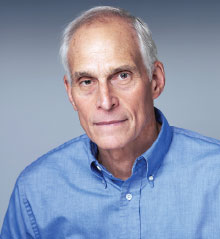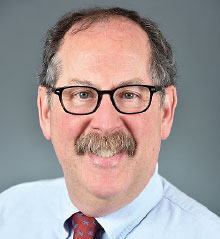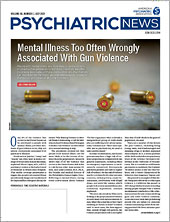According to figures compiled by the National Institute on Drug Abuse, roughly 4.4 million Americans aged 12 years or older had cannabis use disorder in 2018, including 1 in 6 adolescents. Several studies also suggest that 25% to 50% of people who use cannabis daily will develop cannabis use disorder. With statistics like these, are states putting policy before public health by decriminalizing and legalizing cannabis? Experts sought to tackle this question and others regarding cannabis use in a session titled “Clearing the Smoke on Cannabis Use Disorder” at APA’s 2021 online Annual Meeting in May.
Smita Das, M.D., Ph.D., M.P.H., a clinical assistant professor of psychiatry and behavioral health sciences at Stanford University School of Medicine and a member of APA’s Council on Addiction Psychiatry, kicked off the session with an overview of cannabis legalization and the state of cannabis science.
“Thirty-six states have enacted laws to permit the sale and use of cannabis to adults, and that number keeps changing,” Das said. “Yet at the same time, cannabis is a Schedule I substance under the Controlled Substances Act, and the Food and Drug Administration has not approved cannabis as a safe and effective drug for any indication. Now we have an interaction between practice, state policy, and federal policy, and in the middle of it all are the patients and, as partners of patients, all of the psychiatrists and families who are trying to understand how [cannabis] works when it comes to mental health.”
Das highlighted studies that point to an association between high-potency cannabis and symptoms of psychosis in young people who may later develop a psychotic disorder. She added that cannabis use is associated with the emergence of mood disorders, particularly bipolar disorder, among people who have a family history of mood disorders, and that cannabis use is associated with an increased risk of suicidal ideation and attempts in people who have major depressive disorder.
“Many times we have patients coming to the clinic saying that they’re using cannabis to treat a psychiatric disorder, so it’s important that we review with our patients that cannabis can have the opposite [effect] and worsen these illnesses,” Das said.
Anees Bahji, M.D., a fellow in addiction psychiatry in the Department of Psychiatry at the University of Calgary, discussed the finer points of cannabis legalization.
“It is essential to remember that decriminalizing the possession of small amounts of cannabis differs from allowing physicians to prescribe cannabis,” Bahji said. “This is also different from legalizing the supply and possession of cannabis for nonmedical purposes. All of these entail very different policies.”
Bahji noted that although cannabis legalization in Canada was intended to reduce illicit cannabis sales, the black market for cannabis is still alive and well there, largely because black market cannabis costs just $6.37 a gram compared with $10 a gram for cannabis that is sold lawfully.
Andrew Saxon, M.D., director of the Center of Excellence in Substance Abuse Treatment and Education at the VA Puget Sound Health Care System and a member of APA’s Council on Addiction Psychiatry, described several studies of cannabis use in veterans with posttraumatic stress disorder (PTSD). In one, those who used cannabis had worse PTSD symptoms than those who did not use cannabis. In another, there was no difference in PTSD symptoms between those who used cannabis and those who did not, but those who used cannabis had higher rates of unemployment, suicidal ideation, and alcohol use. In a third study, one by Saxon and colleagues, patients experienced fewer PTSD symptoms the day after using cannabis, but not the day they actually used it.
“This may be because cannabis is a long-acting drug, or it may be because it could be helping people sleep, and a good night’s sleep may be reducing their PTSD symptoms the next day,” said Saxon, who is a professor in the Department of Psychiatry and Behavioral Sciences at the University of Washington.
Saxon said that cannabis use disorder and PTSD often occur together and offered a possible explanation why.
“There is some basic science to suggest that the cannabinoid system is involved in the pathophysiology of PTSD. In at least one study, people with PTSD had higher amounts of CB1 [cannabinoid receptor type 1] in their brains compared with normal controls or people who experienced trauma but did not have PTSD,” he explained. “They also had lower levels of one of the endogenous cannabinoids. People with PTSD may have a different cannabinoid system than those without PTSD.”
Thomas Riordan, M.D., a physician representative of the Pennsylvania Department of Drug and Alcohol Programs Methadone Death and Incident Review Team, described his experience in attempting to get the Pennsylvania Department of Health to rescind its cannabis indication for treating opioid use disorder (OUD) in the state’s medicinal cannabis program.
“Many of us in the state psychiatry and addiction treatment community were concerned with the ease with which an indication could be approved [by the state] and the lack of scientific literature to support marijuana use for any psychiatric condition,” Riordan said. He explained that when he and his colleagues asked for the materials used by the Pennsylvania Department of Health to approve cannabis for treating OUD, they found no robust support for this indication among the 15 studies they were provided.
Riordan and colleagues then submitted other data to the department to reverse the indication.
“Our review [of current medical literature] showed no human data for cannabis efficacy in treating opioid use disorder,” he said. “Individuals with opioid use disorder are at a higher risk for cannabis addiction, … and clinical experience shows no correlation between cannabis use and remission or recovery from opioid use disorder.”
Their attempt to reverse the indication did not succeed, however.
Oscar Bukstein, M.D., M.P.H., a professor of psychiatry at Harvard Medical School and vice chair of the Department of Psychiatry at Boston Children’s Hospital, rounded out the session with a discussion of current treatments for cannabis use disorder.
“Overall, meta-analyses show that at three or four months of follow-up, people receiving psychosocial interventions for cannabis use disorder have twice the rate of abstinence as those not receiving treatment,” Bukstein said.
He provided an overview of psychosocial interventions, which include cognitive-behavioral therapy (CBT), motivational enhancement therapy (MET), and combined interventions that mix and match CBT, MET, and contingency management.
Bukstein discussed motivational interviewing as a way of enhancing motivation, including providing nonjudgmental feedback, exploring and resolving ambivalence, and collaborative goal setting. He stressed the importance of using empathy and a nonconfrontational approach.
“This is important for those of you who are a little bit older and understand that many of the primary forms of treatment in years gone by have been confrontational,” he said. ■



